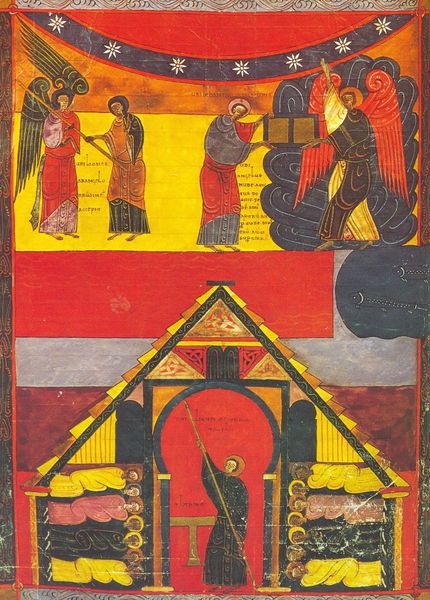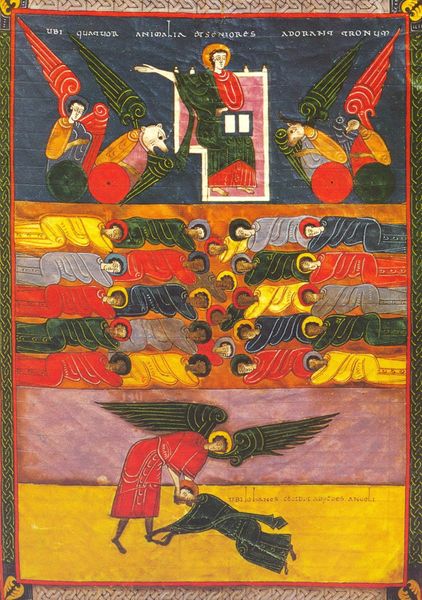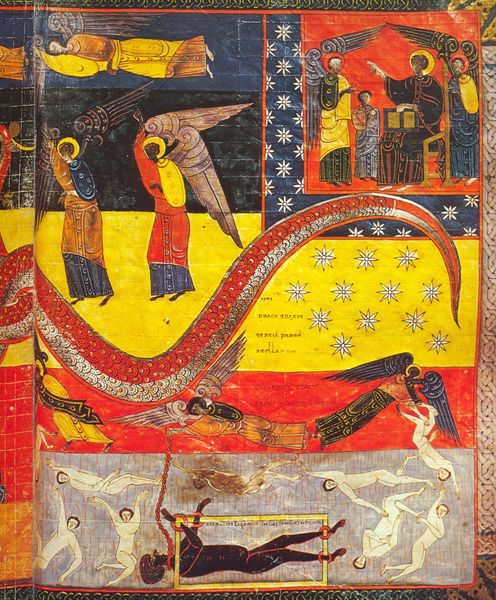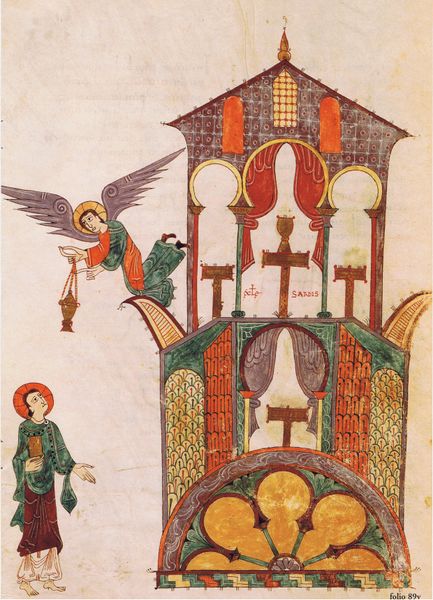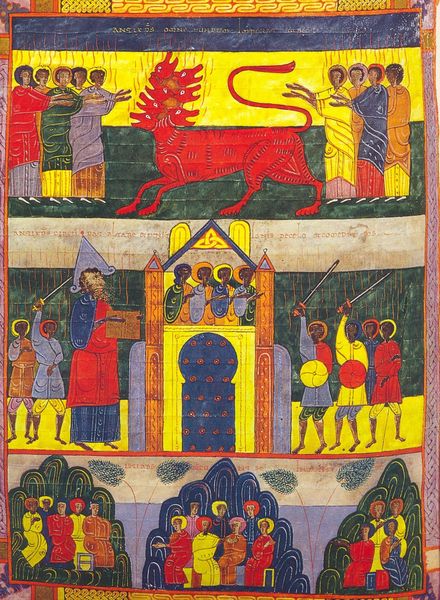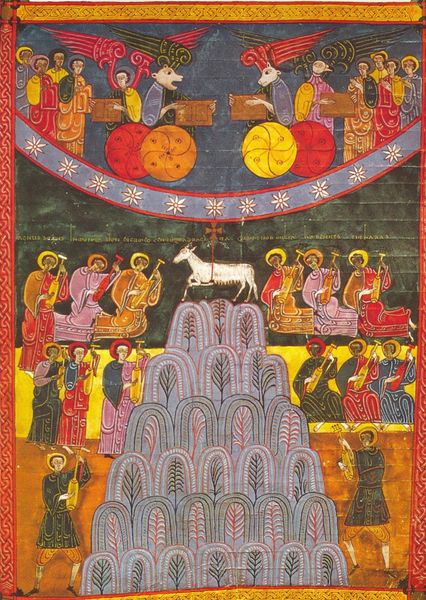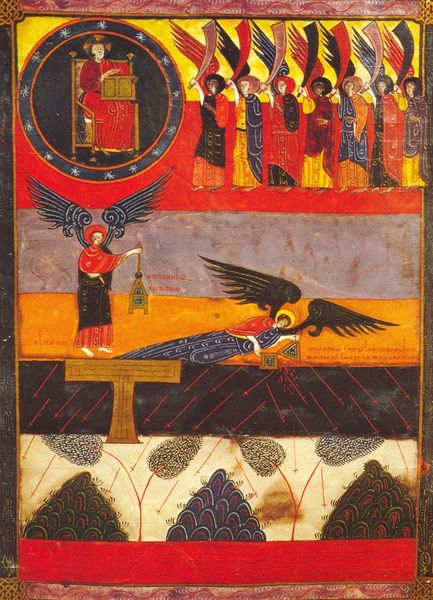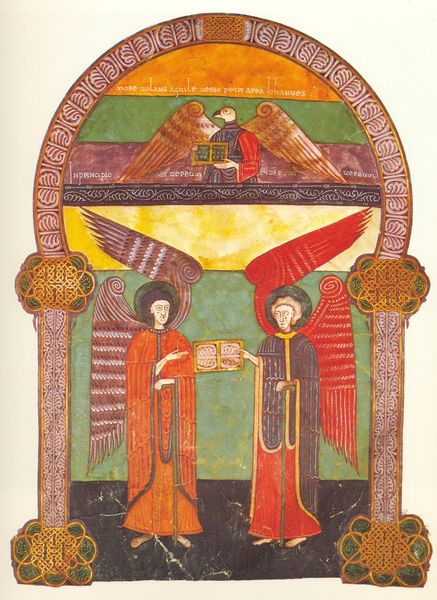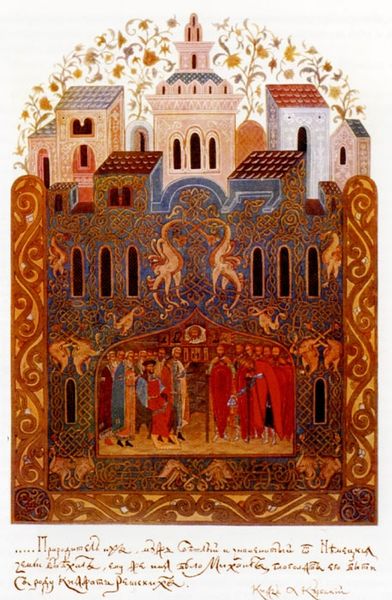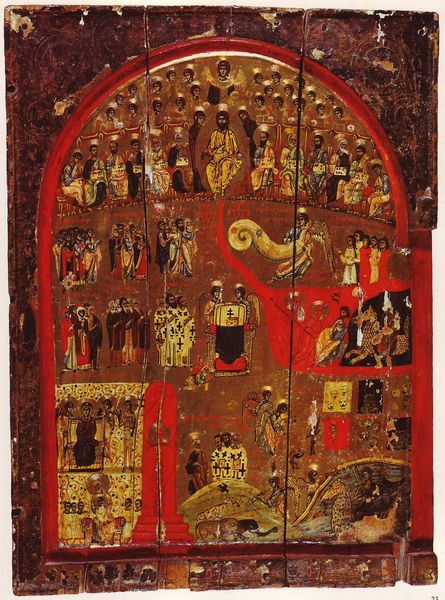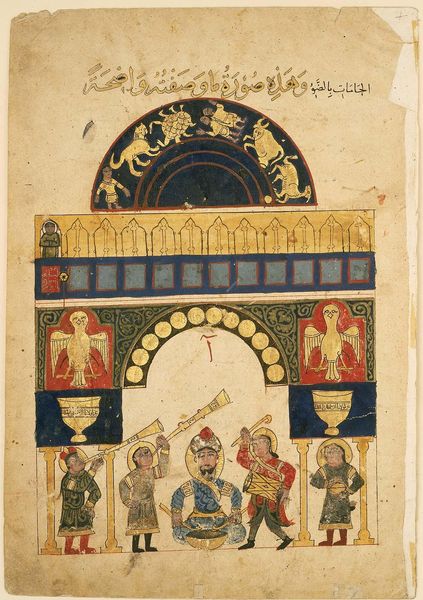
painting
#
medieval
#
painting
#
figuration
#
islamic-art
#
history-painting
Copyright: Public domain
"Jugement de Babylone réduite à un brasier. Apoc. XVIII" or “The Judgement of Babylon Reduced to Ashes” was created around 1050 by the artist Facundus. In this piece, the medieval artist envisions the biblical Babylon not as a distant, ancient city but as a contemporary, Moorish-influenced urban center. The presence of the angel overseeing the city's destruction speaks to the pervasive religious beliefs of the time, reminding viewers of divine power over human endeavors. But what is the relationship between power and identity? Babylon, as a symbolic center of earthly power, is depicted with architectural motifs that were common in Islamic Iberia. This melding of biblical narrative with contemporary cultural elements reflects the complex, interwoven identities of medieval Europe, shaped by interactions and conflicts between Christian and Muslim societies. The reduction of Babylon to ashes is not just a depiction of divine punishment. It’s a statement about the transient nature of human power and cultural identity. It evokes a sense of foreboding, prompting reflection on the cyclical nature of history and the ever-present potential for destruction.
Comments
No comments
Be the first to comment and join the conversation on the ultimate creative platform.
